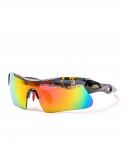Impact of COVID-19 on transportation
- News
- 0 likes
- 1376 views
- 0 comments

COVID-19 has undoubtedly brought unexpected changes in the lives of each of us. The transport and freight sectors have certainly not remained intact! The pandemic has affected all forms of transport ranging from cars, trains, buses and planes.
In every country around the world, we are hit hard by the COVID-19 pandemic. Public transport patronage and road use have declined significantly. It is no surprise as so many people have lost their jobs or are working from home. Throughout this situation we are seeing some interesting transport developments around the world, whether for reasons of social distance or for the possibility of experimentation. Cycling has seen a boom, and the use of bicycles and mostly scooters is on the rise in many areas. The fear of people on public transport has turned bicycles into a trend and are already seen as the ideal solution for transportation.
The COVID-19 pandemic has reshaped our cities in many ways. As the number of vehicles on the road has dropped during the blockage, the number of people who have chosen walking and cycling as an option is increasing, moving safely through once congested roads. Changes in mindset and activity have brought some obvious benefits: local air pollution has dropped by up to 60% globally, and cities that were once covered in a thick layer of smog are experiencing their first blue sky for a long time .
The question that naturally comes to mind is whether bicycles will continue to be the primary solution after the pandemic. 21 days are enough for a daily action to become a habit and routine for us from which it is difficult to give up afterwards. Clearly many people have decided to avoid using cars considering the use of bicycles a habit that should continue as there are enough benefits in our daily lives. Our biggest enemy nowadays seems to have its benefits in the way it has changed our lives, the impact is direct and every day we see people who are more responsible for themselves and the community.
Since the total closure or on schedule, residents of various cities have experienced the urban space free from noisy traffic for the first time since the tremendous increase in car use. Many have rediscovered walking and cycling, filling city streets with people rather than cars. Amidst all the chaos, the pandemic has given us a new perspective on what a pedestrian-friendly, bike-friendly city with fewer road casualties, less pollution and a better urban environment might look like.
This may not be just a passing fad: now that the pandemic has opened its eyes to the importance of motorized transportation, we have a small window of opportunity to translate short-term responses into long-term changes - and create livable and breathtaking cities.











Comments (0)